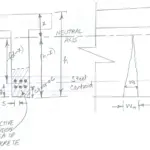The production of electrical systems, products, and gadgets requires electrical design, a crucial component of electrical engineering. It entails designing electrical systems and components to satisfy particular specifications and guarantee their effectiveness, efficiency, and safety. The use of electricity to power homes, businesses, and industries make this field essential to today’s civilization.
Electrical design courses are popular among electrical engineers, to learn Electrical design courses in Chennai, you can consider CADD which gains trust among students and professionals. The fundamentals of electrical design, its significance of it, and sophisticated ideas that electrical engineers should understand are all covered in this article.
Also Read: Benefits of buying reconditioned electrical transformers
Basics of Electrical Design
Creating electrical schematics, diagrams, and layouts that show the parts, connections, and interconnections of the electrical system is known as electrical design. Determining the electrical needs, the electrical load and the components required to satisfy those requirements are frequently the first steps in the electrical design process. It is crucial to take each electrical component in the system’s power supply, voltage levels, and safety requirements into account.

The electrical design process begins with the definition of the electrical requirements and ends with the creation of the electrical schematic. The electrical system is represented graphically here using symbols and wire diagrams. The use of the electrical schematic allows one to see the electrical parts and connections. The electrical layout is then created using this data, which is a physical representation of the electrical schematic.
Calculating the electrical loads is a crucial component of electrical design. This entails figuring out how much power each electrical component needs and making sure that the electrical system can supply it. Based on the specifications of the electrical components, electrical loads can be determined, but the calculation must account for the increase in electrical load with time.
Electrical Security
Electrical engineers must take safety into account in every part of their job because it is a crucial component of electrical design. To reduce the danger of electrical mishaps and guarantee the safety of users and equipment, electrical systems must be built to fulfill safety requirements.
The National Electric Code (NEC), the International Electrotechnical Commission (IEC), and the Occupational Safety and Health Administration are a few of the electrical safety requirements that electrical engineers must take into account (OSHA). These standards provide rules for electrical safety, such as minimum wire diameters, maximum voltages, and ground requirements, as well as guidance for the design of electrical systems.
When choosing electrical components, electrical safety is another vital factor to take into account. Electrical engineers must make sure the electrical parts they employ adhere to safety regulations and have been examined and approved by a reputable testing facility.
Like Us on Facebook!
Advanced Electrical Design Concepts
Electrical design is growing more difficult as technology progresses. In order to build effective and efficient electrical systems, electrical engineers must stay abreast of the most recent technological developments and comprehend complex electrical design ideas.
Subscribe Us on YouTube!
Power electronics is a cutting-edge idea in electrical design. This entails the creation of electronic systems and parts that are used to regulate and transform electrical power. The efficient and effective use of energy in contemporary life is made possible by power electronics, which is a crucial component of electrical design.
Renewable energy systems are yet another cutting-edge idea in electrical design. These systems are made to capture energy from renewable resources like hydropower, solar power, and wind power. The concepts of renewable energy, as well as how to build and incorporate these systems into the electrical grid, must be understood by electrical engineers.
Control systems are yet another crucial cutting-edge idea in electrical design. In order to control and monitor electrical systems and components, control system development and design are required. Electrical engineers need to have a solid grasp of control system design in order to build safe, effective, and efficient electrical systems. Control systems are essential in making sure that this is the case.
Benefits of learning Electrical Design Courses
Electrical Education Can Be Transformed
That refers to the fact that a large number of professions, trades, and businesses are totally dependent on some sort of electrical system. Although a career transition will probably necessitate extra training, having experience as an electrician may be beneficial for other abilities.
Lifelong Skills
While some technologies are always evolving, power will always be available in the same way. In ten years, Apple will have a new operating system, but its gadgets will still need wires and a power source to function.
Once you master these abilities, you will always have them. You’ll become the go-to person in your network for electrical requirements, and friends and family will come to you for assistance or counsel.
Conclusion
If being independent is the proper course for you to take, you’ll be able to live the American dream after you have that network of people who are familiar with and rely on your skills.
Once you get your license, you might also think about working as an independent electrician as not many jobs offer this chance in such a short amount of time. The production of electrical systems, products, and gadgets requires electrical design, a crucial component of electrical engineering.


















